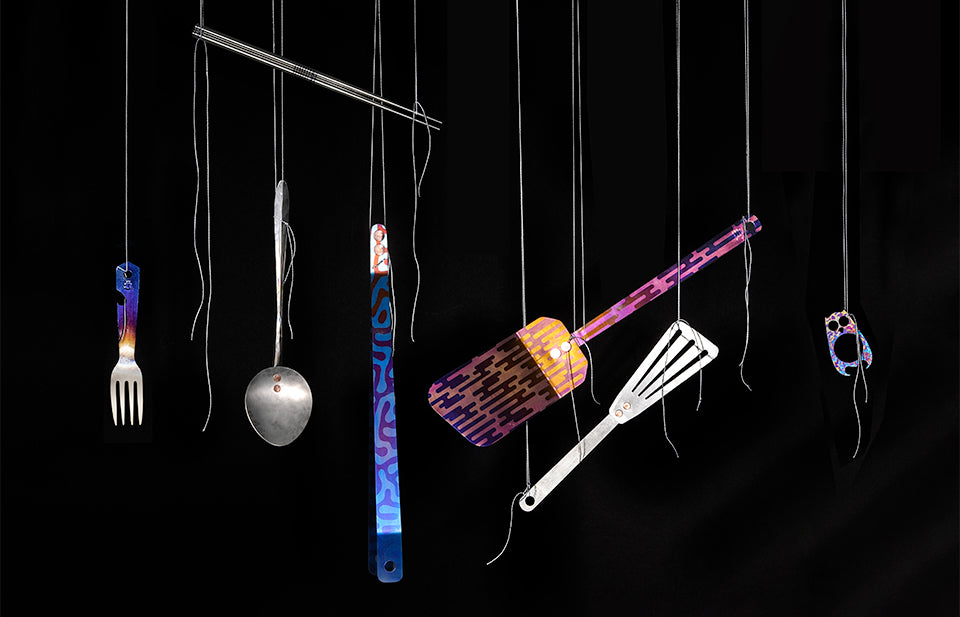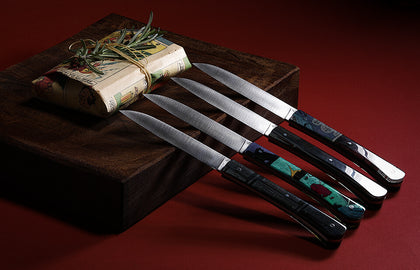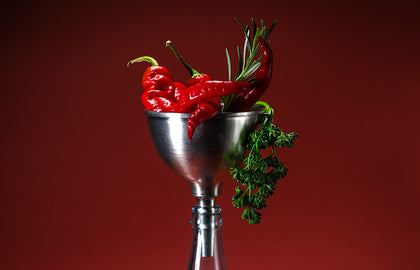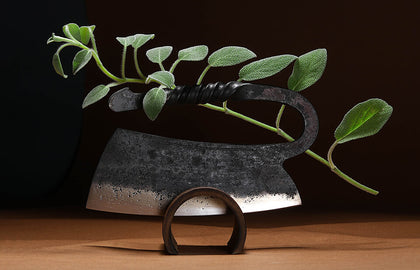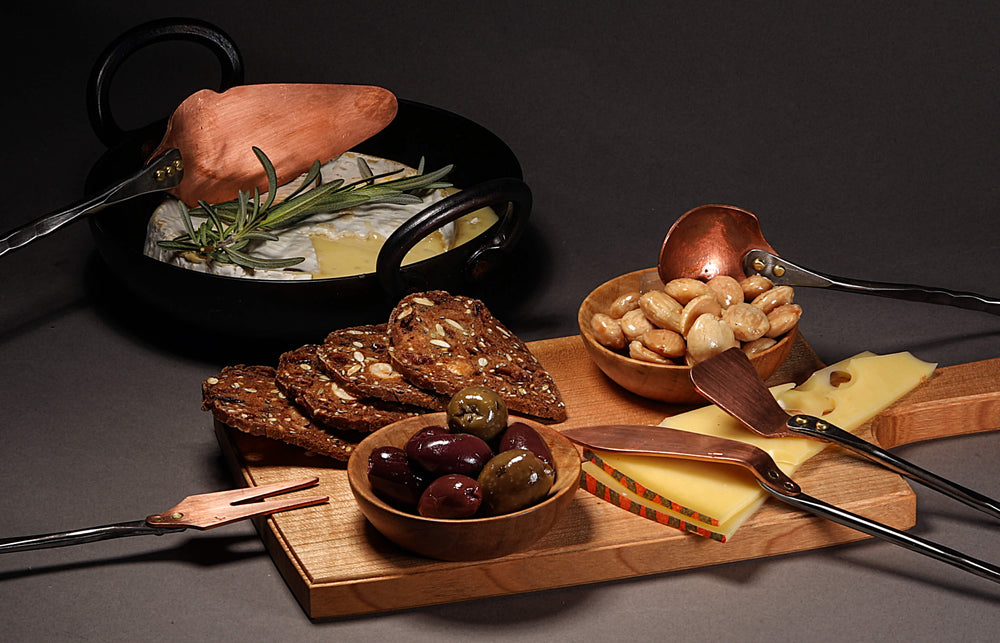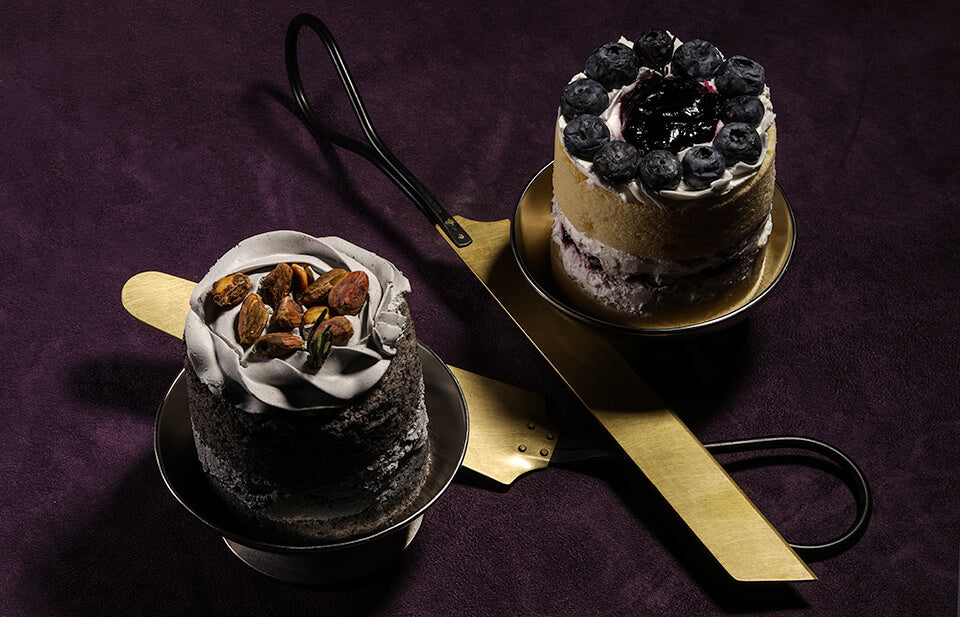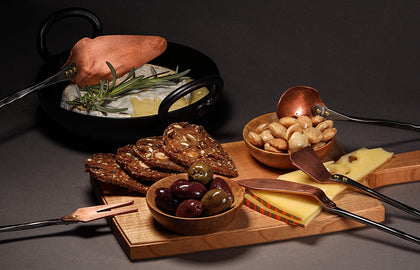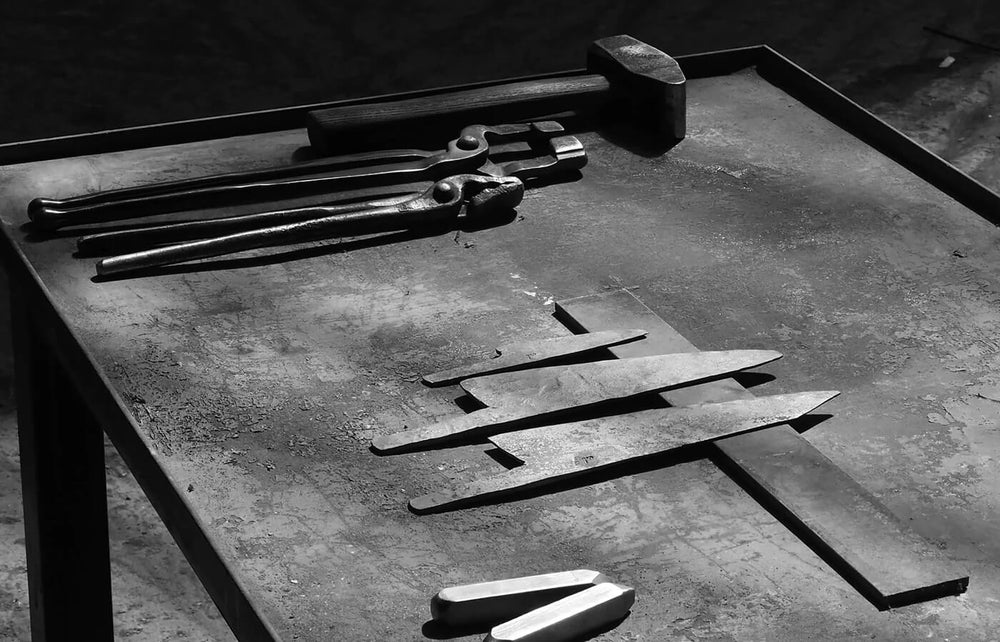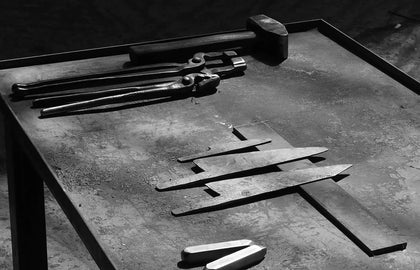
The Surprising History of Spoons
From recipes to imaginary dinner party planning, Elettra Wiedemann's Impatient Foodie is a site dedicated to the marriage of "Slow Food ideals with the realities of fast paced, urban life." Based in New York City as well, that's a mission we can get behind.
I first met Elettra at her popup restaurant, GOODNESS, at NY Fashion Week several years ago and was inspired by both her approach to food and sustainability, and the culinary minds she brought together for the cause, including Mario Batali and Allain Allegratti to name a few. So when Elettra and writer Amanda Arnold did a story titled The Surprising History of Spoons, it was only natural to feature it here on Eatingtools. Food author and historian Bee Wilson, who penned our History of Eating Tools piece contributed to this story as well. Enjoy!

Artwork by Samantha Hahn
Everyone knows the modern-day average: around half-a-foot long and relatively unexciting. But we also probably couldn’t imagine life without them. Really, it goes without saying – we would have a hard time living without the classic, essential spoon.
Whereas forks are somewhat of a newer piece of flatware, dating back just a few centuries, cultures all around the world have been using spoons, made out of everything from bone to wood, since Neolithic times. Today, everyone knows the average spoon – they all look relatively similar, save a few decorations and/or embellishments. However, there once was a time when spoons were more remarkable, when specialized baby spoons had a place in this world, and when many spoons didn’t look much like spoons at all.
The Golden Age was Victorian times in England. According to Silver Magpies, a site dedicated to antique silver and flatware, “the rise of industrialization combined with a growing middle class with money to spend eventually led to the great flowering of the spoon which hit its peak in the Victorian era.” While at this time, there existed the basic table spoons, tea spoons, and serving spoons, these basics “exploded into a bewildering taxonomy of new sub-species.”
There were spoons that today would be esoteric, like the aspic spoon, which featured a long bowl with one sharpened edge to help one cut through suspended, denser objects suspended in the savory jelly. There were not just general soup spoons, but large ones for hearty gumbos or chowders, medium-size ones for cream-based soups, and tiny ones for bouillons. There were, seemingly, spoons for every single type of fruit: melon spoons, grapefruit spoons, berry spoons, citrus spoons. The country was fascinated in other specialized utensils, that is for sure—there were sardine forks, jelly knives, and oyster forks, among others—but no utensil was replicated quite like the classic spoon.
“Silverware was a favorite Victorian sport. Inventing specialized tools and acquiring them before the neighbors knew how to use them was what people did to while away the time and work out their aggressions before they had video games,” Judith Martin writes in a “Miss Manners” column in the Chicago Tribune. Just as there’s no better humblebrag today than having the latest coffee-brewing technology on your countertop, or the en vogue oversized ice cubes for Old Fashioneds’ at your dinner party, the more specialized spoons one had, the more refined and “in-the-know” you were.
Bee Wilson, a food historian, journalist, and author of various food-related books, is something of a esoteric flatware specialist. In her book Consider the Fork: A History of How We Cook And Eat, she examines everything from whisks to graters to spoons as pieces of technology have indelibly changed how we consume food. To Wilson, flatware isn’t a tool to be overlooked—it can give you great insight to the minds and the appetites of past cultures.
More than just gimmicky-but-cute antiques you can throw in a curio cabinet, by looking at the specialized spoons that different cultures used, you can infer the popularity of certain tiny-spoon-requiring foods. The fact that there once existed Stilton scoops, a specialty spoon invented solely because of the English’s love of the stinky blue cheese, not only proves the country’s dedication to the craft of specialized spoons, but also to foods to which they proudly claimed as their own and even their political/cultural rivalries – did they create specialized spoons for French cheeses? Mais non!
Wilson writes, “Mother-of-pearl egg spoons reflect the Edwardian fondness for a soft-boiled eggs…Hanoverian mustard spoons hint at what a vital condiment this fiery fluid was in the English diet…and Georgians of the eighteenth century loved roasted bone marrow and devised a series of specialized silver spoons and scoops for eating it.”
Toward the end of the 19th century, America caught on to the trend and started churning out one-use spoons, notably with serving spoons for dishes like fried oysters, chipped beef, macaroni, and even potato chips, Wilson writes. However, no country quite fell in love with specialized spoons as much as Victorian-age England.
Today, spoons have survived as tools to transport liquid or semi-liquid foods to your mouth—not so much as multi-use tools with beveled or sharpened edges, or distinctly-shaped bowls. Grapefruit spoons, with their serrated edge to help diners segment the halved fruits, still sometimes lie in the out-of-reach back of kitchen drawers, and ice cream spoons aren’t completely obsolete, but for the most part, people have adopted the same spoon mentality: if one standard spoon can be used for pretty much anything, why keep drawers full of its one-use brethren? Just as in many fields in manufacturing, as industrialization permeated societies in the 20th century, one-size-fits-all replaced artisan-made, and the little guys suffered.
However, one tiny spoon has stood the test of time: the universal teaspoon, meant for stirring milk and sugar tea until it reaches your desired level of richness and sweetness. Wilson suggests that this spoon has likely survived because it’s not only a spoon for tea, but also one for the universally-loved sugar. She also argues that it hit that not-too-big, not-too-small perfect medium. It was a “handy little utensil,” but not too little, like the French coffee spoon.
But overall, the world is no longer so hospitable for small, special spoons; efficiency has beat-out fun and specialization. However, if we are to exist under a Donald Trump presidency for the next four years, perhaps the small-handed will bring back tiny spoons.

Elettra Wiedemann at her GOODNESS popup restaurant.
